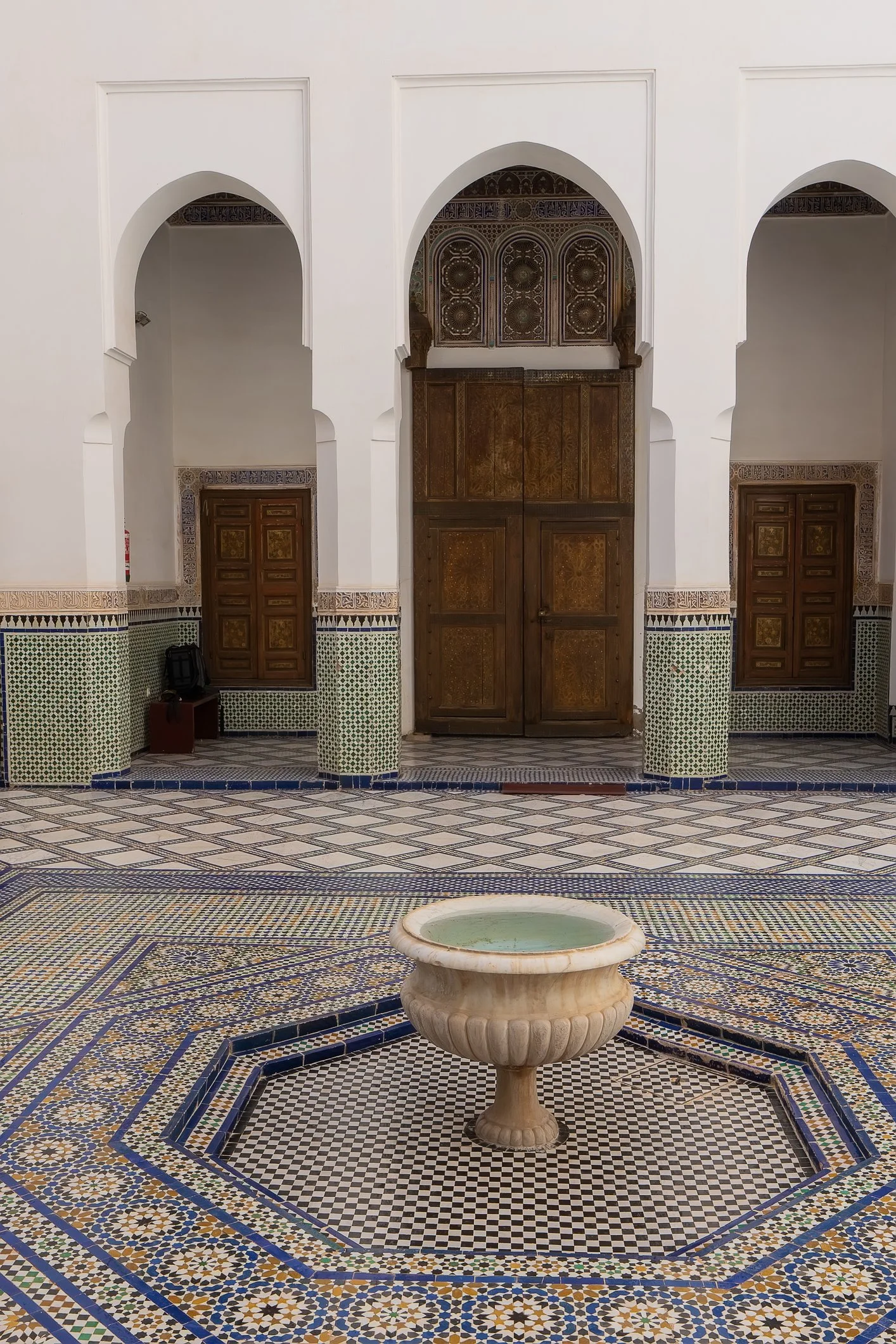Nestled in the heart of Marrakech, the Dar Si Said Museum, also known as the National Museum of Weaving and Carpets, is housed in a stunning palace that exemplifies Moroccan architectural beauty. Originally built in the mid-19th century for Si Said B. Moussa, brother of the grand vizier Bou Ahmed, the palace serves as an immersive gateway into traditional Moroccan crafts and design. This architectural gem, featuring intricate woodwork, stunning zellij tilework, and expansive Andalusian-style gardens, was transformed into a museum in the early 20th century by the Moroccan Ministry of Culture to preserve the vast wealth of Moroccan artisan craftsmanship. Officially opened to the public in 1932, the museum focuses on the rich history and social significance of various forms of Moroccan carpet-making, alongside traditional arts and crafts such as wood carving, ceramics, leatherwork, and textiles.
Położone w sercu Marrakeszu, Muzeum Dar Si Said, znane również jako Narodowe Muzeum Tkactwa i Dywanów, mieści się w pięknym pałacu, który jest przykładem typowej marokańskiej architektury. Pierwotnie zbudowany w połowie XIX wieku dla Si Saida B. Moussy, brata wielkiego wezyra Bou Ahmeda, pałac daje dziś wgląd w historię tradycyjnego marokańskiego rzemiosła i wzornictwa. Ten klejnot architektury, charakteryzujący się misterną stolarką, oszałamiającymi kafelkami zellij i rozległymi ogrodami w stylu andaluzyjskim, został przekształcony w muzeum na początku XX wieku przez marokańskie Ministerstwo Kultury w celu zachowania ogromnego bogactwa marokańskiego rzemiosła rzemieślniczego. Oficjalnie otwarte dla publiczności w 1932 roku, muzeum koncentruje się na bogatej historii i znaczeniu społecznym różnych form marokańskiej produkcji dywanów, obok tradycyjnych sztuk i rzemiosł, takich jak rzeźba w drewnie, ceramika, wyroby skórzane i tekstylia.
The exquisite architecture of Dar Si Said is a significant component of its appeal, showcasing detailed cedar wood carvings, painted ceilings, and geometrically patterned tiles that reflect the craftsmanship of Moroccan artisans. Visitors are captivated by the sumptuous Hispano-Moorish ceilings and meticulously carved cedar woodwork, making the museum itself a work of art worth the visit.
Już samo bogactwo architektury Dar Si Said przesadza o jego atrakcyjności: kunsztowne rzeźby z drewna cedrowego, malowane sufity i geometryczne wzory płytek, które odzwierciedlają kunszt marokańskich rzemieślników. Ogromne wrzenie robią wspaniałe hiszpańsko-mauretańskie sufity i misternie rzeźbiona stolarka cedrowa, co sprawia, że muzeum samo w sobie jest dziełem sztuki wartym odwiedzenia.
Gorgeous carpets from the High Atlas region are on the display here, while the exhibits also include clothing, weaponry, beaten copper objects, various types of furniture and fittings, antique doors, and Berber jewellery.
W muezum można podziwiać wspaniałe dywany z regionu Wysokiego Atlasu, a eksponaty obejmują również odzież, broń, kute przedmioty z miedzi, różne rodzaje mebli, antyczne drzwi i berberyjską biżuterię.
Distinct from the nearby Bahia Palace, the layout of Dar Si Said spans multiple levels, including a grand reception hall on the upper floor and a large riad garden with a central pavilion adorned with painted wood. The palace’s courtyard is a serene retreat, filled with flowering plants and cypress trees.
W odróżnieniu od pobliskiego Pałacu Bahia, układ Dar Si Said obejmuje wiele poziomów. Uwagi warta jest wielka sala recepcyjna na górnym piętrze i duży ogród riadowy z centralnym pawilonem ozdobionym malowanym drewnem. Dziedziniec pałacu to miejsce spokojnego wypoczynku, wypełnione kwitnącymi roślinami i cyprysami.

























































































































































































